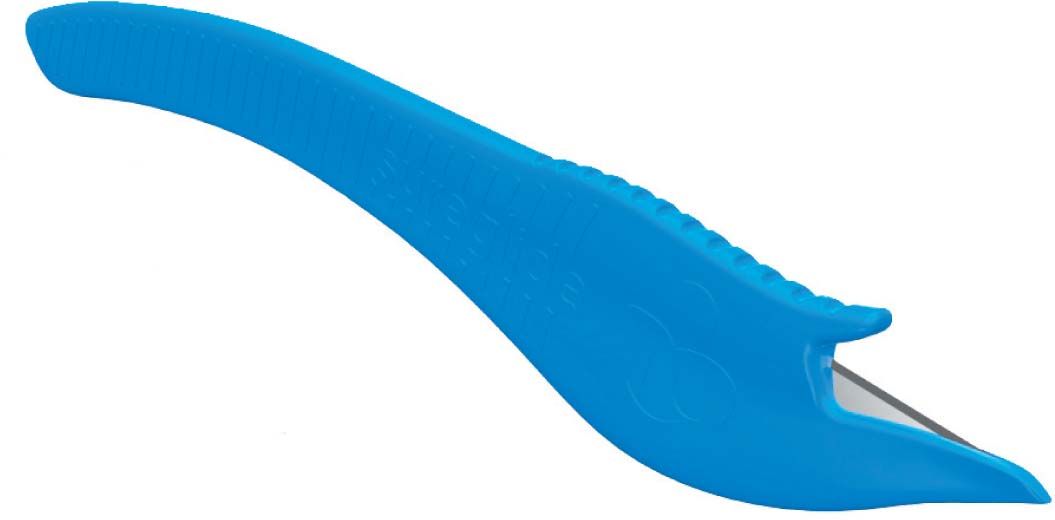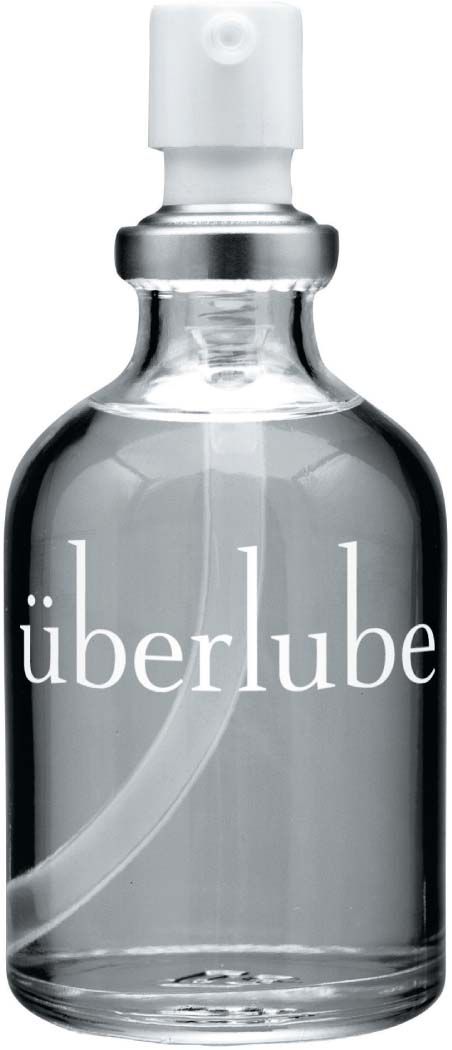Tools Test Drive: Sureglide, Überlube, and TruClear
Dr Greenberg reports his thoughts on the Sureglide device and preventing lacerations during cesarean, Überlube and helping women with vaginal dryness and dyspareunia, and TruClear ULTRA Mini tissue removal device for mechanical morcellation.

Background
Creating a hysterotomy during cesarean delivery is as basic a skill as exists in the practice of obstetrics. Unfortunately, about 0.7% to 1.9% of the time while cutting into the uterus, babies are cut as well.1,2 While at first glance that percentage may seem low, when one takes into consideration that about 1.5 million cesarean deliveries are performed every year in the United States, this small percentage amounts to about 10,500 unnecessary injuries, especially when the appropriate number should be closer to zero!
Design/Functionality
To minimize the risk of iatrogenic scalpel injuries to babies at the time of cesarean delivery, Ecomed Solutions has introduced the Sureglide cesarean delivery safety scalpel. Its straightforward design offers a stainless steel surgical blade encased in a plastic handle that extends past the blade and forms into a pointed tip. The idea is to use the plastic tip to enter the uterus and then extend the hysterotomy by cutting up and away from the baby. Not surprisingly, in trial use in the operating room, Sureglide worked exactly as expected. With the blade facing up, the tip is pushed through the serosa and myometrium. The hand holding the device is then gently rocked back and pushed forward while the blade safely and efficiently creates a hysterotomy. Easy. Quick. Safe.

Innovation
On the innovation front, Sureglide is a little wanting as its doppelgänger C Safe has been on the market for several years. In my opinion the 2 devices look, feel and perform almost identically and because C Safe was first, it gets all the innovation points.
Value
By medical device standards, Sureglide is pretty inexpensive ($18 each) but it is still more costly than a #10 scalpel blade. That said, the value play is really about how many cut babies you and your hospital are willing to tolerate.
Summary
I have opined before that I think it is time we made newborn lacerations at the time of cesarean delivery a “never” event because we have the technology to essentially eliminate the problem. While rising healthcare costs are always an issue, I am pretty confident most parents would pay for this device themselves out-of-pocket if they knew it could prevent an accidental laceration to their baby.
REFERENCES
1. Alexander JM, Leveno KJ, Hauth J, et al. Fetal injury associated with cesarean delivery. Obstet Gynecol. 2006;108(4):885-890.
2. Smith JF, Hernandez C, Wax JR. Fetal laceration injury at cesarean delivery. Obstet Gynecol. 1997;90(3):344-436.
NEXT: Ãberlube
Ãberlube

Background

Vaginal dryness and dyspareunia are issues for which every gynecologist needs suggestions and options to provide to patients. By at least one account, genitourinary syndrome of menopause (GSM) and GSM-like symptoms affect about 15% of premenopausal women and 40% to 54% of postmenopausal women1 and those numbers do not fully encompass the entire universe of sexual lubricant needs. While estrogens may serve as the prescription cornerstone of therapy to address GSM, over-the-counter (OTC) lubricants found in the pharmacy are more widely used by patients and their partners than prescription solutions and therefore, providers should be aware of what is on the shelves in this niche. One of those products is überlube.
According to company lore, in 2002 childhood friends Stephen Magnusen and Frank Zwergel came up with the idea of überlube with the intention of creating “a lightweight lubricant with log-lasting performance… that doesn’t leave a sticky residue.” Though they set out to make a lubricant with a broad variety of applications including massage oil, moisturizer, hair gel, lock grease or even shoe polish, überlube found its way into sex-product stores, where it soon became a “go to” for couples seeking a lubricant for using during sex.
Design/Functionality
Ãberlube has 4 ingredients: dimethicone, dimethiconol, cyclomethicone and tocopheryl acetate. The first 3 are all polymeric organosilicon compounds commonly referred to as silicones, and tocopheryl acetate is the ester of acetic acid and vitamin E. All the ingredients are non-toxic and can even be ingested. The formula naturally does not harbor bacteria, yeasts or molds so it needs no preservatives, alcohols or antimicrobial additives. It is sold in 3 sizes: a 14-mL travel size, a standard 50-mL clear spray bottle or a larger 100-mL clear spray bottle.
In testing between my ungloved fingers and on my gloved fingers during bimanual exams, überlube had a silkier feel and was lubricious without being messy. In my non-scientific, uncontrolled, un-blinded survey of patients to whom I had recommended überlube as a lubricant option for intercourse with their partners, every one thought it was better than anything they had previously tried.
Innovation
Though I am no chemist, I am pretty sure überlube is different from almost everything else out there. Its combination of safety, excellent lubrication and lack of mess is unique and might earn it a spot in the lubricant hall of fame.
Value
For sexual lubricants, the value of the product has to be individualized because each person is going to have a different degree of discomfort and a different desire to fix the problem. That said, a 50-mL bottle of überlube at $18 is not the same financial commitment as investing in a 4-year college education, so I think it is money well spent on trying a bottle if GSM is a significant problem.
Summary
The world of lubricants goes well beyond car engines, bars and Washington, DC. In the sexual lubricant niche, silicone-based überlube is a newer option that many patients may find helpful. A bottle sits on my desk for patients to sample and I have recommended it many times with many satisfied users.
REFERENCES
1. Gandhi J, Chen A, Dagur G, et al. Genitourinary syndrome of menopause: an overview of clinical manifestations, pathophysiology, etiology, evaluation, and management. Am J Obstet Gynecol. 2016;215(6):704-711.
NEXT: TruClear ULTRA Mini tissue removal device
TruClear ULTRA Mini tissue removal device

Background
Circa 1998, Dr Mark Hans Emanuel in the Netherlands went into his garage with an orthopedic shaver and came out with the first hysteroscopic mechanical tissue morcellator. Five years later in 2003, Smith & Nephew received 510(k) clearance from the FDA and the Smith & Nephew IUR Morcellation System (now TruClear, owned by Medtronic) was ready for clinical use in the US. Some 14 years and tens of thousands of hysteroscopic morcellation procedures later, hysteroscope mechanical tissue morcellation is a standard for many gynecologists for resecting intracavitary uterine pathology.

For those physicians who have been practicing in a cave and are unfamiliar with hysteroscopic mechanical morcellation here is a quick primer. Hysteroscopic mechanical morcellators utilize device-specific operating hysteroscopes with integrated optics, inflow and outflow channels and large open central lumens through which proprietary morcellator devices can pass. They function best with high inflow/outflow fluid management systems that can accommodate the large fluid burdens that accompany the procedures due to the need to replace the distention media that is suctioned off removing morcellated tissue. The TruClear system is available in 2 sizes: TruClear 8.0, a 9 mm (27 Fr) hysteroscope for larger pathology and the nimbler TruClear 5C or 5.0, a 5.7 mm (17 Fr) hysteroscope for smaller pathology. The business ends of these systems are single-use tissue removal devices that pass through the central lumens and simultaneously morcellate and aspirate targeted tissues. They come in 2 designs: a rotating serrated blade for softer tissues (i.e. polyps, retained POCs) and a more robust reciprocating, guillotine-style cutting blade for denser tissues (i.e. submucus myomas). Until now, only the larger TruClear 8.0 had a reciprocating cutting bladder but the Ultra Mini changes that.
Design/Functionality
TruClear ULTRA Mini tissue removal device is a single-use, stainless steel, 2.9 mm OD instrument designed to function with the TruClear 5C or 5.0 hysteroscope set. Like its 4.0-mm OD cousin, the TruClear ULTRA Plus device has a reciprocating, guillotine-style cutting blade designed to resect denser tissues. But unlike its zaftig relative, the ULTRA Mini fits through a 5.7 mm hysteroscope.
In use in the OR, the ULTRA Mini was a tissue-chomping beast. The company claims that ULTRA Mini resects tissue at 4.4 grams/minute. While this is Usain Bolt range speed (typical myoma resection rates for morcellators are more in the range of 1.87-3.77 grams/minute1), nothing in my initial OR experience left me doubting it. In this niche, ULTRA Mini is best-in-class. If Medronic can just redesign the TruClear 5C or 5.0 hysteroscopes with glass-rod rather than fiber optic lens, the whole system would be close to perfect.
Innovation
While the bulk of users may not appreciate it, ULTRA Mini is an impressive innovative accomplishment. As these devices get smaller and smaller, the engineering challenges get exponentially greater. Reciprocating speeds, blade angles, tissue clearance etc. all have narrow tolerances with each component potentially killing performance. I have no idea exactly how the engineers used this combination of stainless stain tubes and blades with silicone and chromium coatings to make this device work but they did and they did it well.
Value
ULTRA Mini is not cheap. If fact, at $1097 it is the Bentley of hysteroscopic instruments. That said, there are two considerations. First, nobody pays list. Second, we are talking value not cost. In that regard the real questions should be, “does this device allow surgeons to accomplish what they set out to accomplish, how efficiently were they able to do it and was it worth it?” In a recent metaanalysis, Shazly et al. demonstrate that as compared with hysteroscopic loop resections, hysteroscopic morcellation procedures were faster and more complete.2 So, depending on your hospital’s OR costs and your surgeons’ skill sets, this device may be a better value than it first appears. While this hardly ends the argument, I do think it is an important consideration when valuing this technology.
Summary
In my opinion, hysteroscopic mechanical morcellation is an evolving alternative to traditional loop resectoscopy that just got even more enticing with the introduction of the TruClear™ ULTRA Mini tissue removal device. With the combination of its small size and large tissue resecting potential, I think ULTRA Mini will alter the hysteroscopy landscape as surgeons assimilate this new technology’s potential into their practices.
REFERENCES
1. Meulenbroeks D, Hamerlynck TW, Saglam-Kara S, Van Rijssel NK, Van Vliet HA, Schoot BC. Hysteroscopic Tissue Removal Systems: A Randomized In Vitro Comparison. J Minim Invasive Gynecol. 2017 Jan 1;24(1):159-164
2. Shazly SA, Laughlin-Tommaso SK, Breitkopf DM, Hopkins MR, Burnett TL, Green IC, Farrell AM, Murad MH, Famuyide AO. Hysteroscopic Morcellation Versus Resection for the Treatment of Uterine Cavitary Lesions: A Systematic Review and Meta-analysis. J Minim Invasive Gynecol. 2016 Sep-Oct;23(6):867-77
Reducing multifetal pregnancy through publicly funded IVF programs
April 26th 2024Learn how a mandatory elective single-embryo transfer policy in publicly funded in vitro fertilization programs significantly decreases multifetal pregnancy rates, offering insights into mitigating risks in assisted reproduction.
Read More
Unlocking placenta accreta spectrum with single-cell gene targets
April 18th 2024Discover how cutting-edge single-cell RNA sequencing unveils molecular insights into placenta accreta spectrum disorders, potentially revolutionizing diagnostics and treatments for this life-threatening pregnancy complication.
Read More
Excessive gonadotropins in IVF: Effects on mosaicism and live birth
April 12th 2024A recent study revealed a correlation between high doses and prolonged duration of exogenous gonadotropin use during in vitro fertilization and increased embryonic mosaicism alongside diminished live birth rates, prompting reconsideration of dosage and duration protocols.
Read More
